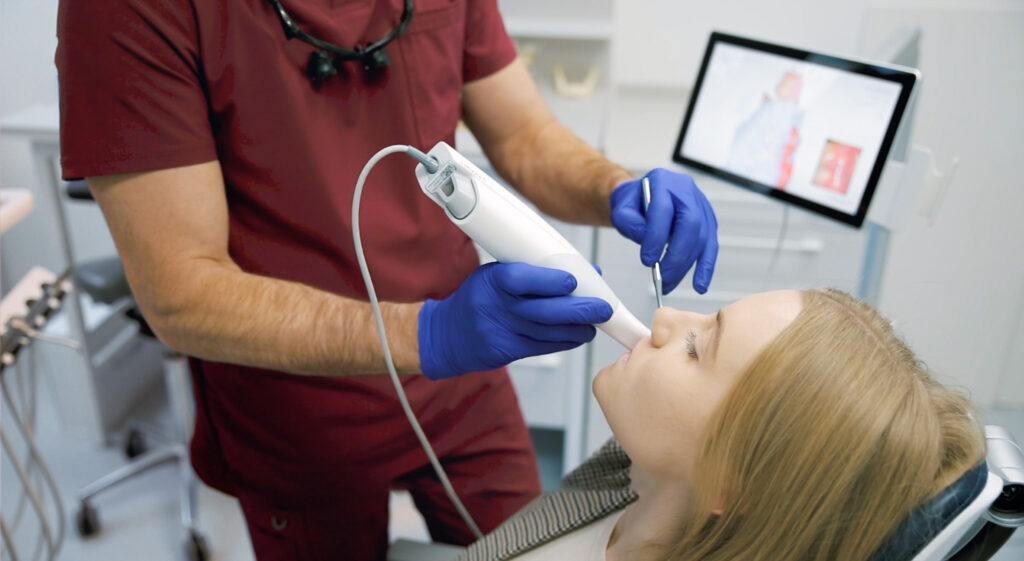
Temporomandibular joint disorders
Temporomandibular joint (TMJ) disorders are common dental conditions that many people may encounter. It is usually a minor condition accompanied by tenderness and mild pain in the jaw, as well as occasional clicking sounds when opening or closing the mouth. In more severe cases, the pain in the jaw becomes much worse and can lead to blockage of the jaw, which in turn causes problems with eating and speech. Treatment of TMJ is a combination of kinesiotherapy and in-clinic treatment such as splinting and surgery.
What are TMJ disorders?

TMJ, or temporomandibular joint, disorders are a group of conditions that affect both the jaw joints as well as the nearby muscles and tendons. Temporomandibular joint disorders are often found between those of ages 20-40.
TMJ is one of the most complex joints in the human body and is responsible for the forward, backward and lateral movement of the lower jaw. TMJ disorders come from some disruption to the mechanical workings of the jaw’s joints. This often comes from an inflammation of the muscles that work the jaw, the inflammation coming from things such as clenching and grinding (bruxism), dislocation of the joint, arthritis, trauma, and an improper bite.
What are the most common symptoms of TMJ disorders?

TMJ disorders have many signs and symptoms. It is often difficult to pinpoint temporomandibular joint dysfunction because one or more of the symptoms may be a sign of another disease. A more accurate diagnosis can only be made by a qualified dentist after a clinical examination and radiological tests. TMJ disorder symptoms may include:
- Jaw Pain
- Neck and Shoulder Pain
- Earache
- Headaches
- Clicking and grinding noises when opening/closing the mouth or when chewing
- Tightness or Soreness in the face and cheek
- Difficulty chewing
- Changes in bite pattern
- Tooth Pain
- Swelling in face and cheek
How TMJ disorders are diagnosed
If you are showing symptoms of a TMJ disorder it is advised that you book an appointment for a dental check-up with one of our specialists. Since TMJ disorders share many of their symptoms with other dental conditions we will need to rule out other causes for the symptoms as well as confirming the TMJ disorder.
To diagnose a TMJ disorder your specialist will press on your face and jaw to find areas of pain, observe the range of motion of the jaw, and feel the jaw joints as you open and close your mouth. These will confirm that there is an issue with the joint but further scans will need to be taken to see the extent of the problem. The types of scan used include Panoramic X-rays, CBCT scans, and MRI scans.
Conservative treatment of TMJ disorders

If you show any symptoms of a temporomandibular joint disorder then it is recommended to visit a maxillofacial surgeon. The surgeon will diagnose the problem by checking for any other conditions that could be causing the symptoms, as many of them are shared between a number of conditions.
Once an official diagnosis has been made, the surgeon will discuss with you a number of potential treatment options with the selection varying based on severity of the condition and create a detailed treatment plan.
A number of conservative at-home treatment options will often be suggested before any surgical methods are offered. The majority of TMJ disorder cases are remedied with the use of these at-home methods:
- Eating softer foods. Reducing intake to a softer diet can give the jaw time to relax and rest and prevent it from being overworked. People often find foods such as yoghurt, mashed potatoes, cooked fruits and vegetables, grains, and soups to be among their soft diet. Avoid hard foods such as crusty bread, crisps, biscuits, raw vegetables such as carrots, as well as chewy food like caramel.
- Avoiding chewing gum. Decreasing the amount of chewing gum or stopping altogether will decrease the stress on the muscle and reduce TMJ symptoms.
- Reducing Stress. People who are frequently stressed may find themselves clenching their jaw. This pressure can cause inflammation of the muscles leading to a TMJ disorder. If the underlying stress, and therefore clenching, is treated then most patients find their other symptoms to eventually dissipate once the muscle has had time to heal.
- Taking Medications. Over-the-counter nonsteroidal anti-inflammatory drugs (NSAIDs) help to reduce swelling, inflammation, and pain. Examples of these medications are ibuprofen, aspirin, and naproxen. Other medications such as muscle-relaxants or anti-anxiety medication can also help but are available via prescription only.
- Avoiding excess jaw movement and manipulation. Movements like yawning should be kept to a minimum. When yawning we recommend placing a hand beneath the chin to prevent the mouth opening further than necessary. Avoid clenching the teeth and resting your chin on your hand as this can put excess force upon the joint.
- Doing TMJ Exercises and stretches. There are a number of exercises and stretches that can be performed to release tension and alleviate symptoms of TMJ disorders. Your dentist will be able to provide personalised suggestions of which to perform during your appointment.
In addition to the above, a number of further treatments are often used to treat TMJ disorders, such as wearing a bite-guard or splint. These are a form of treatment that fits over your lower or upper teeth. They help to place your jaw in a more favourable position and protect against the damage of grinding/bruxism. Both day and night versions are available, with either one or both sets of teeth being covered, depending on the required treatment.
Surgical treatment of TMJ disorders
If no other treatment is successful, then TMJ surgery will often be the final method. Surgery is only for the more severe of cases that, despite other treatments, still give enough pain as to where surgery is needed.

There are three main types of TMJ surgery:
- Arthroscopy. Performed under general anaesthesia, this treatment involves a long and thin probe being inserted through a small incision just before the ear. This probe allows the surgeon to examine the internal structure of the jaw as well as make small adjustments. These adjustments include removing inflamed tissues and realigning the disc. Due to the size of the incision, this method is minimally invasive, leaves less scarring and has a much shorter recovery time.
- Arthrocentesis. This is a minor procedure performed under local anaesthesia and is often performed when the jaw becomes locked in place. Small needles filled with a specially designed fluid are inserted into the jaw and are used to wash out the joint. This procedure is also used to remove excess fluid build-up within the joint, which can form as trauma to the joint becomes worse. This fluid can lead to an increase of symptoms and thus removing it can be a simple way to relieve pain.
- Open Joint Surgery. Performed under general anaesthesia, this is your more traditional surgery. A large incision is made which allows for more complex treatments. This surgery is used in more severe cases where there may be tumours present, the bone that comprises the joint may be compromised and needs to be repaired, or there are pieces of fragmented bone within the joint that need to be removed or repaired. This method has a higher chance of scarring and nerve injury, as well as general complications. However, despite the drawbacks this treatment is still used in situations where the benefits outweigh the risks.
TMJ disorders treatment in our clinic
Our clinic has a resident facial and maxillofacial surgeon who has extensive experience in treating TMJ disorders while all our dentists are experts in diagnosing and detecting various dental diseases. Our dentists will provide a detailed treatment plan, usually starting with more conservative at-home therapies to try with the more involved surgical options being available when other options haven’t relieved the symptoms.
If you experience any symptoms of a TMJ disorder, or any other dental problems, do not hesitate to book an appointment at our clinic.










